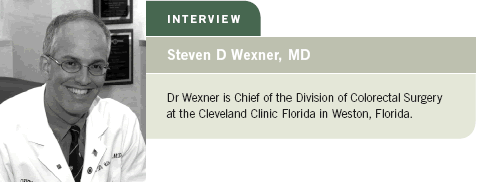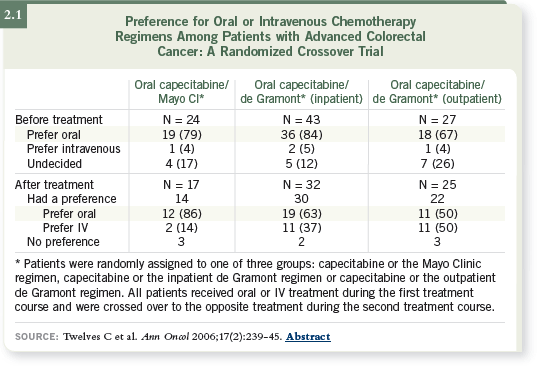
| Tracks 1-17 |
| Track 1 |
Initial evaluation of patients with rectal cancer |
| Track 2 |
Impact of neoadjuvant chemoradiation therapy on the ability to perform surgery |
| Track 3 |
Clinical use of neoadjuvant capecitabine |
| Track 4 |
Clinical use of transanal excision |
| Track 5 |
Laparoscopic surgery for patients with colon cancer |
| Track 6 |
Morbidity associated with laparoscopic surgery for colon cancer |
| Track 7 |
Benefit of open versus laparoscopic surgery |
| Track 8 |
Laparoscopic surgery for patients with rectal cancer |
| Track 9 |
Morbidity associated with laparoscopic surgery for rectal cancer |
|
| Track 10 |
Randomized trial comparing laparotomy to laparoscopic surgery for rectal cancer |
| Track 11 |
Sphincter preservation |
| Track 12 |
Bowel function and quality of life for patients with low rectal lesions |
| Track 13 |
Adequacy of lymph node sampling |
| Track 14 |
Synchronous primary lesion and hepatic metastases |
| Track 15 |
Management of hepatic metastases |
| Track 16 |
Referral of patients with Stage II colon cancer to a medical oncologist |
| Track 17 |
Virtual colonoscopy |
|
|
Select Excerpts from the Interview
Track 1
 DR LOVE:
DR LOVE: Can you describe your initial evaluation of patients with rectal
cancer?
 DR WEXNER: First, I review the colonoscopy report from the gastroenterologist
or the referring colorectal surgeon to ensure the patient has no synchronous
lesions.
DR WEXNER: First, I review the colonoscopy report from the gastroenterologist
or the referring colorectal surgeon to ensure the patient has no synchronous
lesions.
The next questions to ask are as follows: How close is the tumor to the
sphincter? Will we be able to perform sphincter-saving surgery? What stage is
the lesion?
The most important exam to start answering these questions is the “good old-fashioned”
rectal exam. Anterior versus posterior positioning of the tumor
can make a big difference in males because of the difficulty of getting under
the prostate for distal dissection and in females because of the possibility of
needing a posterior vaginectomy.
With posterior tumors, you have the luxury of a little more space to work
with near the rectum. However, an advanced tumor could involve a posterior
exenteration. So the first step is to observe the position of the tumor.
Another step in evaluating the patient is visualization of the lesion using either
rigid proctosigmoidoscopy or, far more commonly, flexible sigmoidoscopy.
For the most distal lesions, flexible sigmoidoscopy won’t allow for an adequate
visual analysis.
For a surgeon, it’s better to evaluate the lesion by feel. For the higher lesions
— midrectum and upper rectum — visualization with flexible sigmoidoscopy
is possible.
Once the initial questions are answered, the next step in the algorithm is the
ultrasound exam, which is performed immediately. Within an hour or two,
the results are returned, and I know the tumor stage.
If the cancer is T3 and/or N1, the patient will be referred for chemotherapy
and radiation therapy. If the tumor is T1 or T2, I have a different discussion
with the patient.
Track 2
 DR LOVE:
DR LOVE: How does neoadjuvant chemoradiation therapy impact the
tumor and your ability to perform surgery?
 DR WEXNER: The efficacy and safety of the chemotherapeutic agents and the
method and modality of radiation therapy delivery have vastly improved over
the last two decades.
DR WEXNER: The efficacy and safety of the chemotherapeutic agents and the
method and modality of radiation therapy delivery have vastly improved over
the last two decades.
We used to fear preoperative chemoradiation therapy because of the possibility
of extreme skin damage, terrible radiation proctitis or making the tissue planes
difficult to handle and increasing the morbidity of perineal wound healing.
Now we’ve gone from that extreme to the other extreme. In most cases I
can only tell a patient underwent preoperative chemoradiation therapy by
examining the site of the tumor, which is left with only a scar in one third of
my patients.
Neoadjuvant chemoradiation therapy has dramatically improved, and it has
made surgery easier to perform because large bulky tumors that seemingly
used to become more fixed and more fibrotic with the treatment are now
disappearing.
The tissue planes become a little edematous, but neoadjuvant treatment is
facilitating dissection in most cases.
Track 3
 DR LOVE:
DR LOVE: The standard for neoadjuvant therapy has been to administer
continuous infusion 5-FU with radiation therapy. What have you
observed in patients treated with capecitabine?
 DR WEXNER: Clearly, not having a pump is advantageous from a quality-of-life standpoint (2.1), and the safety profile speaks for itself. The anecdotal
reports are that patients are continuing to work and are not interrupting their
schedules.
DR WEXNER: Clearly, not having a pump is advantageous from a quality-of-life standpoint (2.1), and the safety profile speaks for itself. The anecdotal
reports are that patients are continuing to work and are not interrupting their
schedules.

Select Publications

